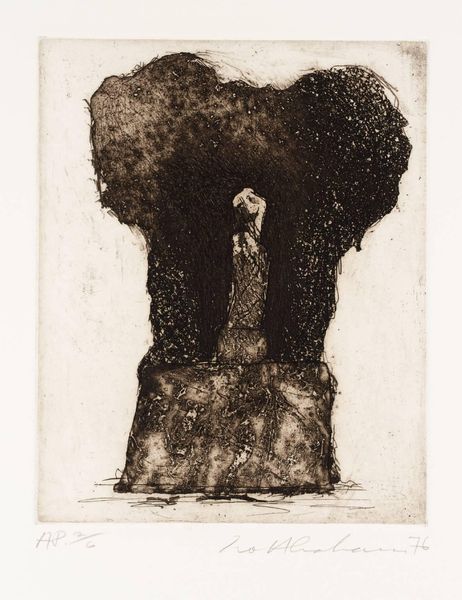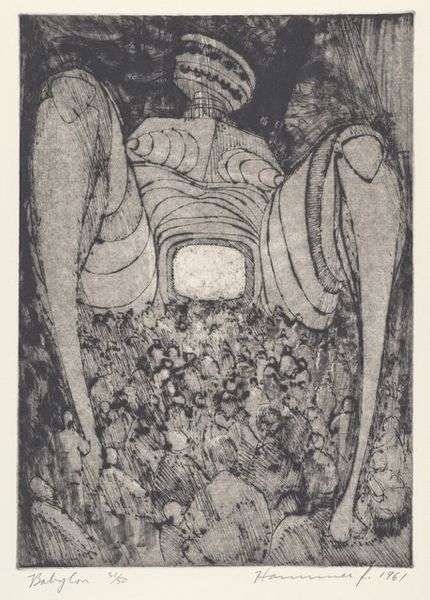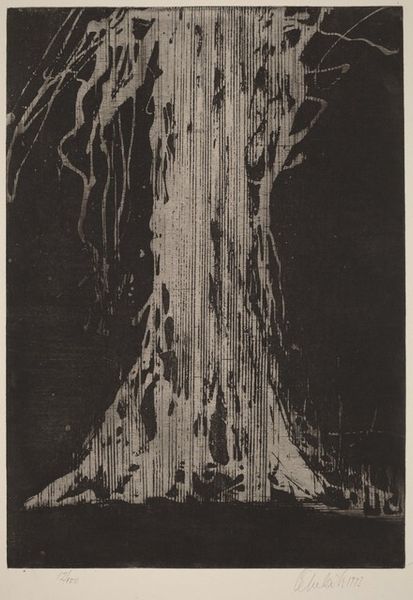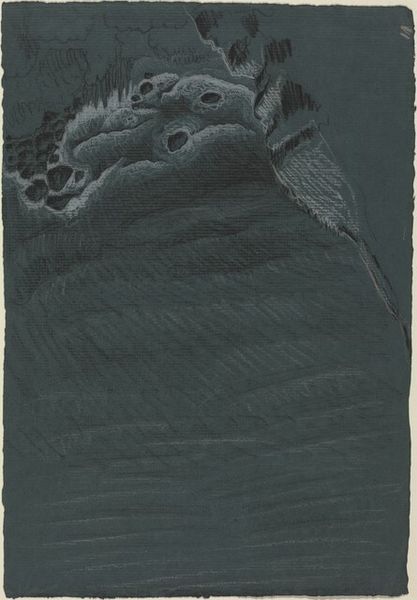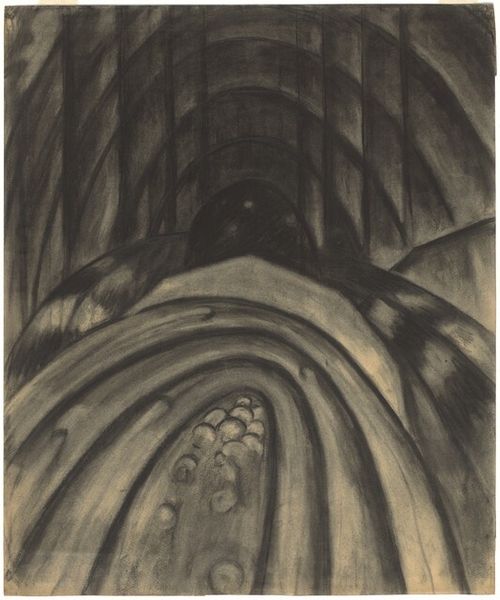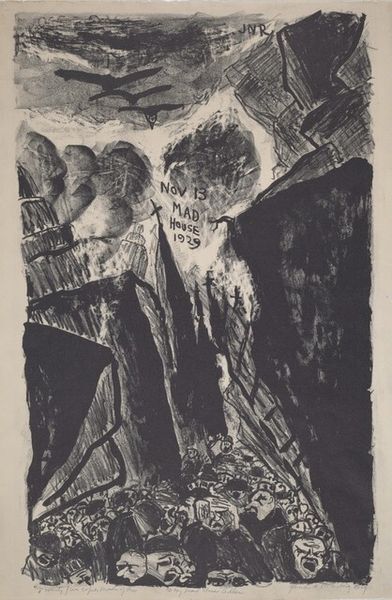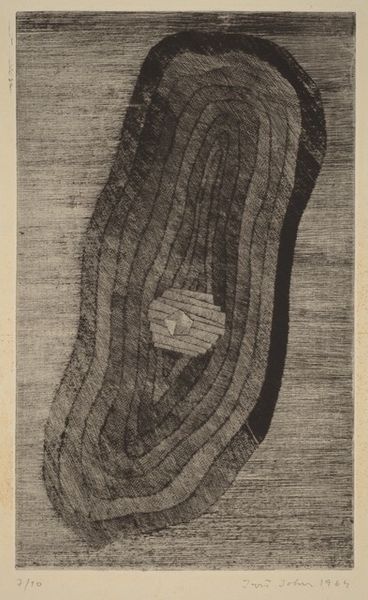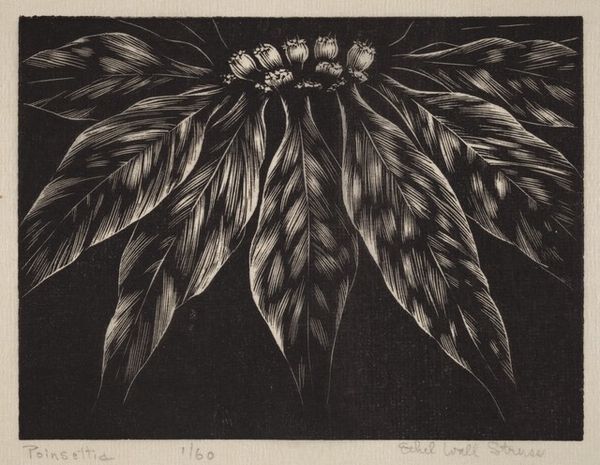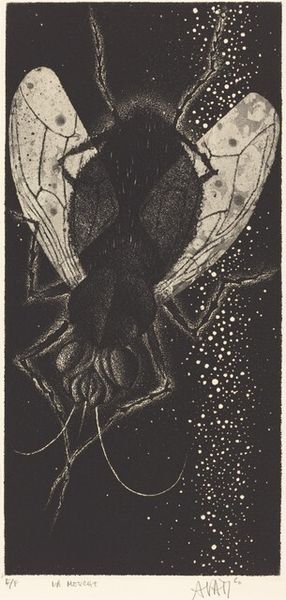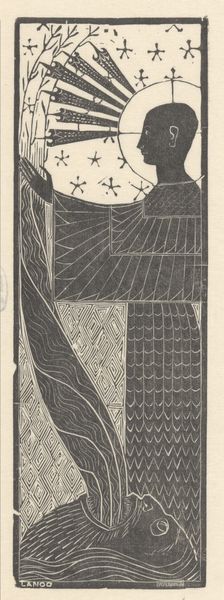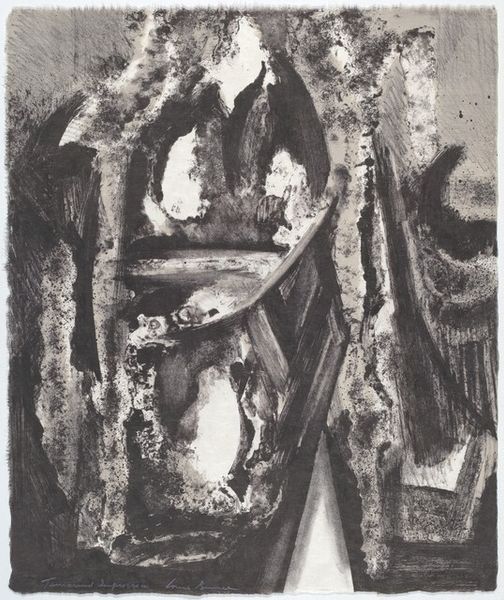
Dimensions: plate: 277 x 226 mm sheet: 366 x 301 mm
Copyright: National Gallery of Art: CC0 1.0
Curator: This print is titled "Hallelujah – Prayer," created by Miriam (Marussia) Hadgadya in 1935. The work is a woodcut print, a compelling example of figuration with clear expressionistic influence. Editor: The texture grabs me immediately. The stark contrast of black and white, the roughness of the cut, it conveys such rawness, a kind of...spiritual grit. Curator: Indeed. Notice how Hadgadya utilizes the limited tonal range to its full potential. The interplay of light and shadow defines the volumes, almost like a chiaroscuro effect within the constraints of the woodcut medium. How would you interpret that composition? Editor: It suggests a certain collective unity, both in subject and perhaps in its making. Carving wood, a slow and deliberate act, evokes labor and commitment. Were there other influences shaping Hadgadya’s artistic labor? Curator: The figures are interesting studies of form and spiritual declaration. Semiotically, raised hands signify prayer, invoking devotion. However, the rendering borders on abstraction, stripping the figures to their essence, heightening emotional impact. Editor: Right, these aren't just pious figures, are they? To me, there’s something challenging in its creation, almost disruptive in how it portrays subjects who might be working-class or who might come from other exploited groups as powerful rather than downtrodden. The social fabric of the 1930s in Europe was fraught with social and economic struggles reflected, maybe inadvertently, in the artist’s methods and subject matter. Curator: It is a compelling reading, though difficult to ascertain definitively. But, the printmaking process is one requiring significant production decisions regarding line, the pressure on the block, even the paper, that would ultimately guide how viewers interpret her visual structures. Editor: True. It speaks to how artists work within—and often react against—material constraints, transforming them into vessels of something so moving. Curator: So much emotion evoked from the medium itself...a simple process and subject matter perhaps reveals volumes when carefully investigated. Editor: Well, in many ways it represents much more about a person's convictions than any history book or art journal may even portray, wouldn't you say?
Comments
No comments
Be the first to comment and join the conversation on the ultimate creative platform.

